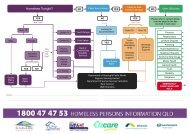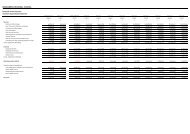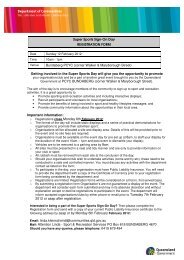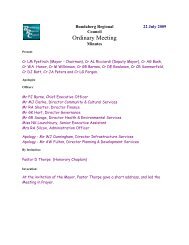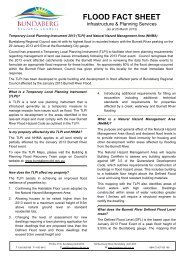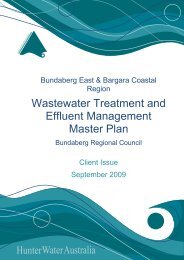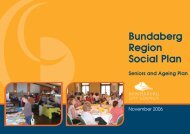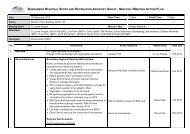High School Water Conservation Booklet Name: - Bundaberg ...
High School Water Conservation Booklet Name: - Bundaberg ...
High School Water Conservation Booklet Name: - Bundaberg ...
Create successful ePaper yourself
Turn your PDF publications into a flip-book with our unique Google optimized e-Paper software.
<strong>Water</strong>way Pollutants: InvisibleNot all pollutants are visible. Invisible pollutants include substances suchas fertilisers, pesticides and pool additives. Invisible pollutants alsocome from mining activities or industrial liquid wastes. Other pollutantssuch as oil and detergents may be invisible in small amounts. If wecannot see pollutants, how can we know that they are there? Follow thissimple procedure.You will need:♦ Red cabbage♦ Glass jars♦ Boiling water♦ Universal indicator paperAction:♦ Cut the cabbage into small amounts♦ Place in jar and pour over boiling water. Allow to cool.♦ Drain water and use to test various substances.♦ Place small quantities in several clean jars of substances such as detergents, insecticide,compost.♦ A change of colour indicates that the water is not pure. Not all the substances willchange the colour of the plant dye in the jars. It does not indicate what the substance inthe water is.♦ Use universal indicator papers to test local waterways. Universal indicator papers areimpregnated a mixture of plant dyes which can detect many invisible pollutants.Observe and record♦ Substance in jar♦ Changes to cabbage dyeType of pollutants Cabbage jar PaperDetergentInsecticideCompost20



